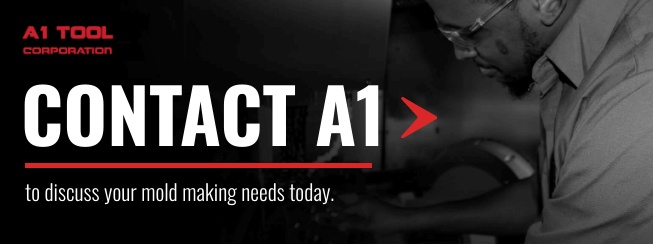Elements of a Mold — From Components to Final Product
Mold design is a complex process with multiple components that requires high levels of technical expertise. The process to mold a final product requires expert engineering skills to ensure accurate dimensions and design features.
Understanding the key components of molding is the first step of the entire precision process. They play critical roles in the injection mold production process. Here are the primary mold components required to produce premium-grade parts.
Cavity and Core Components: Molding components consist of a core and a cavity. The core forms products’ internal surface, and the cavity forms products’ external surface. The molding components constituting a product’s external shape are called concave die (also known as female mold). Those constituting a product’s internal shape (like hole, groove, etc.) are called core or terrace die (also known as male mold). For designing molding components, the cavity’s overall structure should be decided first according to the plastic’s properties, the product’s geometric shape, dimensional tolerance, and operating requirements.
Mold Lock Unit: This is a clamping device composed of multiple plate movements that is used to secure the mold. The device’s functions include:
- A fixed fixing plate holds the fixed (casting) mold half or, in cold chamber machines, holds the shot assembly (casting chamber and shot sleeve).
- A movable fixing plate holds the movable (ejector) mold half.
- Guide columns hold the die locking force created by the locking device, as well as guide the movable fixing plate.
Side-Action Mechanism: Some plastic products have undercuts or side holes. Before being demolded, they need side parting to pull the outside core first. There are two side-action systems:
- Perfect fit action (backup), which includes all actions that attempt to hold the core position by making components fit exactly.
- Compression fit action (zero movement), which includes all actions that compress the core into position by applying and maintaining a high set force before, during, and after injection.
Injection molding machines in the plastic processing industry have to work continuously for long hours to enable contVenting: Every molding process expels gas during the melting process. Vents provide escape hatches. They are groove-shape gas outlets made on mold. Without venting, the final products will have porosity, plate marks, and short shots.
Gating: Gating is used for a variety of purposes, including controlling material flow speed and avoiding backflow while injecting. Usually, gate section shape is rectangular or circular. But the design for shape, size, and position of the gate depends on plastic properties, structures, product dimensions, and sizes.
Ejector Pins: These are used to remove parts from molds. There are two types of ejector pins: straight and shoulder. Specific pin requirements are determined by a product’s structural position.
Guide Bushings: The role of the guide device of the injection mold is to guide the upper mold and the lower mold to match in the correct position.
Cooling System: Adequate mold temperature control is essential for consistent molding. Molded hot plastic is cooled using cooling channels that allow conduction. Working fluid is typically water, although oil can be used in high-temperature applications. Injection mold cooling dissipates the heat of the molding process quickly and uniformly. Fast cooling is necessary to obtain economical production and uniform cooling is required for product quality. The layout of the cooling circuit warrants close attention especially because cooling typically accounts for two-thirds of the injection molding cycle time.
Hot Runner Systems: A term used in injection molding that refers to the system of parts that are physically heated. Hot runner molds consist of two plates that are heated with a manifold system. The manifold helps maintain a consistent temperature by keeping the molten thermoplastic in the runners at the same temperature as the heating cylinder. The heated runners deliver the molten plastic to nozzles that fill the core mold to form the final part. There are several types of hot runner systems. In general, however, they fall into two main categories: externally heated and internally heated. The externally heated systems are well suited to polymers that are sensitive to thermal variations. Internally heated systems offer better flow control.
Understanding the basics of injection molding components is incredibly helpful when you’re ready to introduce a new product to the market. Learn more by talking with the experts at A1 Tool.











